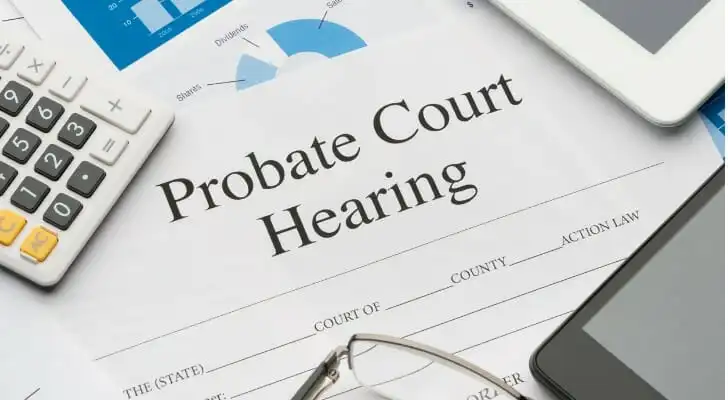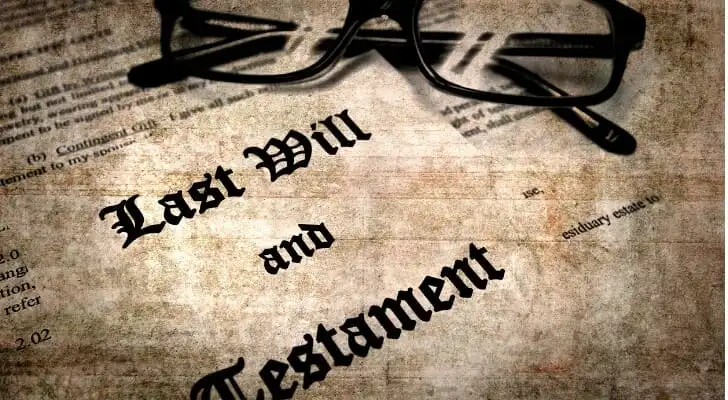Changing the executor of a will is a straightforward process that involves creating an amendment, called a codicil, or drafting a new will altogether. The decision to make this change may arise if the original executor can no longer serve, has passed away, or if personal circumstances have shifted. To update the appointment, the new document must clearly name the replacement executor and be signed and witnessed according to state law.
Do you need help with managing an estate or your own estate plan? Consider speaking with a professional financial advisor about your questions.
What Is an Executor?
The executor is the person responsible for carrying out the terms of a last will and testament, often under the supervision of a probate court that handles both wills and estates. When you name someone as executor, you’re giving them authority to handle certain tasks related to the distribution of your estate.
An executor can initiate the probate process, identify and manage the deceased person’s assets, notify creditors and pay outstanding debts or taxes owed by the estate, among other general duties.
Generally, an executor is often named by the testator, who is the person that makes the will. If the testator dies before an executor is named, the probate court will name one.
As a testator, you can name any person you choose as an executor. For example, that might include a sibling, your spouse, adult children or your estate planning attorney. Minor children can’t serve as executors, and some states prohibit anyone with a felony conviction from doing so, as well.
There’s no rule preventing a beneficiary of a will from also serving as executor. While beneficiaries can’t witness a will in which they have a direct interest, they can be charged with executing the terms of the will once you pass away.
What Does the Executor of a Will Do?
Being executor of a will means there are certain duties you’re obligated to carry out, such as:
- Obtaining death certificates after the will-maker passes away
- Initiating the probate process
- Creating an inventory of the will-maker’s assets
- Notifying the will-maker’s creditors of the death
- Paying off any outstanding debts owed by the will-maker
- Closing bank accounts if necessary
- Reading the will to the deceased person’s heirs
- Distributing assets to the persons named in the will
Executors can’t change the terms of the will; they can only see that its terms are carried out. An executor can collect a fee for their services, which is typically a percentage of the value of the estate they’re finalizing.
Reasons to Change the Executor of a Will
While you may draft a will assuming that your choice of executor won’t change, there are different reasons why making a switch could become necessary. For example, you may need to choose a new executor if:
- Your original executor passes away or becomes seriously ill and can’t fulfill their duties
- You named your spouse as executor, but you’ve since gotten a divorce
- The person you originally named decided they no longer want the responsibility
- You’ve had a personal falling out with your executor
- You believe that a different person is better equipped to execute your will
You don’t need to provide a specific reason to change the executor of a will. Once you’re ready to do so, there are two options to choose from: add a codicil to an existing will or draft a brand-new will.
It’s also important to note that the beneficiaries of a will can petition a court or file a lawsuit to remove an executor who is failing to fulfill their duties. A court may remove an executor if they’ve been convicted of a felony after being named executor, have a conflict of interest, neglected to execute the will of the deceased, mismanaged the estate or stolen assets.
Using a Codicil to Change the Executor of a Will

A codicil is a written amendment that you can use to change the terms of your will without having to write a new one. Codicils can be used to change the executor of a will or revise any other terms as needed. If you want to change your will’s executor using a codicil, the first step is choosing a new executor. Remember, this can be almost anyone who’s an adult of sound mind, excluding anyone with a felony conviction.
Next, you’d write the codicil. In it, you’d specify the changes you’re making to your will (i.e., naming a new executor), the name of the person who should serve as executor going forward and the date the change should take effect.
You’d also need to validate the codicil the same way you did your original will. This means signing and dating the codicil in the presence of at least two witnesses. Witnesses must be legal adults of sound mind, and they can’t have an interest in the will. So, a beneficiary to the will couldn’t witness your codicil but a neighbor or coworker could, if they don’t stand to benefit from the will directly or indirectly.
Once the codicil is completed and signed by yourself and the witnesses, you can attach it to your existing will. It’s helpful to keep a copy of your will and the codicil in a safe place, such as a safe deposit box. You may also want to give a copy to your estate planning attorney, if you have one.
Do You Have to Notify the Executor of a Change?
You’re not legally required to notify the current executor when you change your will, but doing so can prevent misunderstandings later. If the executor is a close relative or friend, it’s often courteous to inform them that they’ve been removed from the role.
Once the new executor is named, it’s also wise to let that person know about their appointment and where the updated will is stored. Clear communication can reduce confusion among those involved in carrying out your wishes after your death.
Writing a New Will to Change the Executor of a Will
If you need to change more than just the executor of your will, you might consider drafting a new will document. The process for drafting a new will is similar to the one you followed for making your original one.
You’d need to specify who your beneficiaries will be, how you want your assets to be distributed and who should serve as executor. The new will would also need to be signed and properly witnessed.
But you’d have to take the added step of destroying all copies of the original will. This is necessary to avoid confusion and potential challenges to the terms of the will after you pass away. If you’re not sure how to draft a new will to replace an existing one, you may want to talk to an estate planning attorney to make sure you’re doing so legally.
What Happens If You Don’t Name an Executor?

If, for any reason, you choose not to name an executor in your will, the probate court can assign one. After you pass away, eligible persons can apply to become the executor of your estate. The person the court chooses would then be able to carry out the terms of your will. If you don’t have a will at all, then your assets would be distributed according to your state’s inheritance laws.
That’s why it’s important to take the time to at least write a simple will. This way, there’s no question of your estate being divided among your heirs the way that you want it to be.
Bottom Line
Making a will can be a good starting point for shaping your estate plan. Naming an executor means you don’t have to rely on the probate court to do it. But if you need to change the executor of your will later, it’s possible to do so with minimal headaches.
Tips for Estate Planning
- A financial advisor can help you create an estate plan for the future. Finding a financial advisor doesn’t have to be hard. SmartAsset’s free tool matches you with vetted financial advisors who serve your area, and you can have free introductory calls with your advisor matches to decide which one you feel is right for you. If you’re ready to find an advisor who can help you achieve your financial goals, get started now.
- A will is just one document you may need as part of your estate plan. You may also consider setting up a trust, for example, if you have extensive assets or own a business. Life insurance is something you may also need to have, along with an advance health care directive or power of attorney.
Photo credit: ©iStock.com/eric1513, ©iStock.com/kate_sept2004, ©iStock.com/courtneyk
